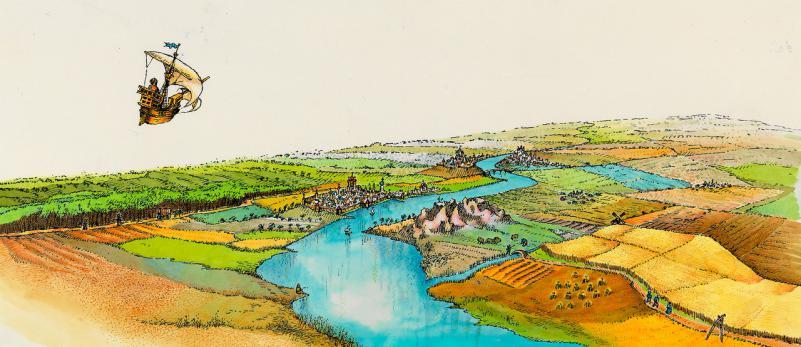Four & Twenty Blackbirds
The Caldecott Medal in the 1960's
Welcome to Four & Twenty Blackbirds, CMNH's blog series on the history of the Caldecott Medal and the children's book illustrations that have been fortunate enough to be honored and awarded by the Caldecott committee.
Let's look at a decade full of tumult, triumph and exploration. A decade just as easily defined with "Free Love" as "Endless War." Ferocious. Regimented. Freewheeling. These are not adjectives that one typically uses in concert to describe the same thing. They serve to describe the 1960's - politically, musically, sartorially - and the children's books published at the time were no different.
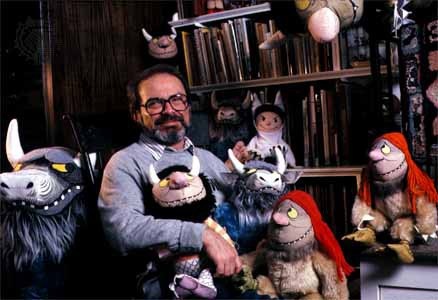 Who: Maurice Sendak (born in Brooklyn, NY, 1928)
Who: Maurice Sendak (born in Brooklyn, NY, 1928)
Book: Where the Wild Things Are / Harper & Row / 1963
Writer: Sendak
Plot: Max dresses up as a wolf. Max misbehaves. Max is sent to his room without supper. Max sees his bedroom transform into a jungle environment and grant him access to the land of the Wild Things. Max so impresses these wild beasts that he becomes their King. Will Max stay with the Wild Things and rule over them and their rambunctious ways? Will he ever return home?
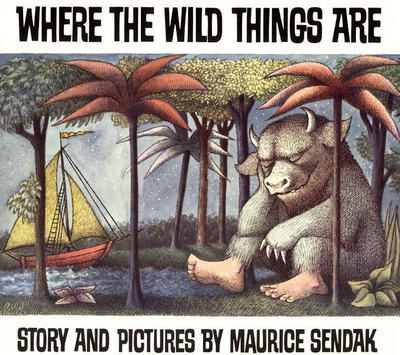 Misc: Perhaps you're familiar with this book? It's quite likely, as it's sold over 20 million copies in the 52 years since it was first published. For those that haven't read the story for many years, it's easy to forget just how little text Sendak uses to tell the story of Max and his new WIld Thing co-horts. The amount of words used to describe the plot above is more than 20% of the words Sendak used for his entire story. The lighter reading requirements took a book that many critics found too scary and full of violent imagery that much more attractive to younger readers. According to Sendak, many libraries banned the book until, finally, by 1965, they realized that children continually asked for the book and its absence made them want to read this forbidden curiosity even more. The Caldecott committee awarding Wild Things the medal in 1964 likely helped to quicken the critical turnaround by librarians and critics alike.
Misc: Perhaps you're familiar with this book? It's quite likely, as it's sold over 20 million copies in the 52 years since it was first published. For those that haven't read the story for many years, it's easy to forget just how little text Sendak uses to tell the story of Max and his new WIld Thing co-horts. The amount of words used to describe the plot above is more than 20% of the words Sendak used for his entire story. The lighter reading requirements took a book that many critics found too scary and full of violent imagery that much more attractive to younger readers. According to Sendak, many libraries banned the book until, finally, by 1965, they realized that children continually asked for the book and its absence made them want to read this forbidden curiosity even more. The Caldecott committee awarding Wild Things the medal in 1964 likely helped to quicken the critical turnaround by librarians and critics alike.
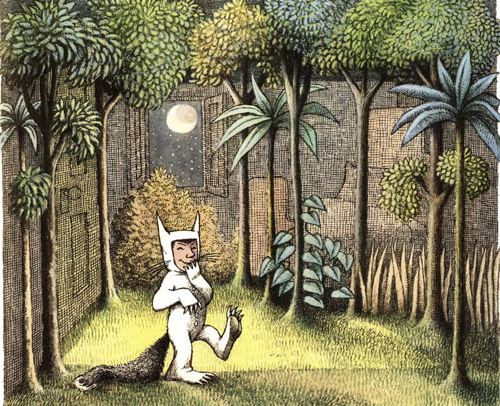 Sendak felt that the book (in addition to 1970's In the Night Kitchen and 1981's Outside Over There) show, "how children master various feelings – danger, boredom, fear, frustration, jealousy – and manage to come to grips with the realities of their lives."
Sendak felt that the book (in addition to 1970's In the Night Kitchen and 1981's Outside Over There) show, "how children master various feelings – danger, boredom, fear, frustration, jealousy – and manage to come to grips with the realities of their lives."
Short animated films were produced in 1973 and 1988. A children's opera was commissioned and first performed in London in 1984, followed by it's U.S. premiere in St. Paul, Minnesota the following year. Despite these pre-existing adaptations, the book was long considered to be "unfilmable". That didn't stop Spike Jonze (Being John Malkovich, Her) from directing and Dave Eggers (A Heartbreaking Work of Staggering Genius) from writing the screenplay for the 2009 big screen adaptation - all with Sendak's blessing; something that so many other potential Wild Things potential big-screen suitors could never seem to obtain.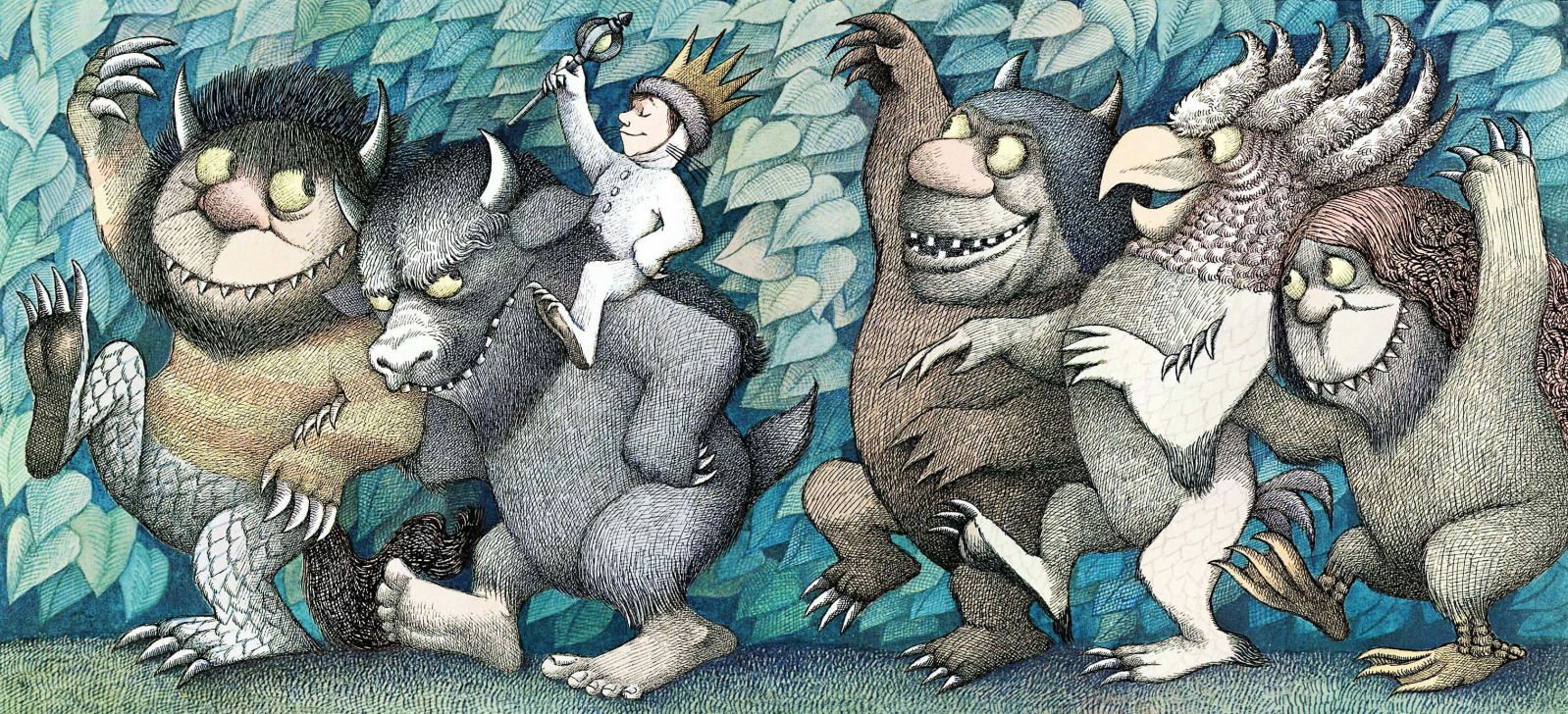
Sendak was often asked about the potential for a sequel to his most famous work and he was consistently against it. Sendak remarked to Stephen Colbert that the thought a sequel to the tale of Max and his Wild Things would be, "the most boring idea imaginable!"
From 1954's A Very Special House through 1982's Outside Over There, Sendak was recognized by the Caldecott committee a staggering eight times - honored seven times and receiving the medal once, for Wild Things. Despite this enormous achievement, Sendak does not hold the record for most recognized by the Caldecotts. That honor belongs to Marcia Brown, honored six times and medaled thrice.
Availability: The book - not to mention plush figures, t-shirts with Sendak quotes, the film soundtrack, posters, etc. - continue to be available both online and through your local bookseller/toy store.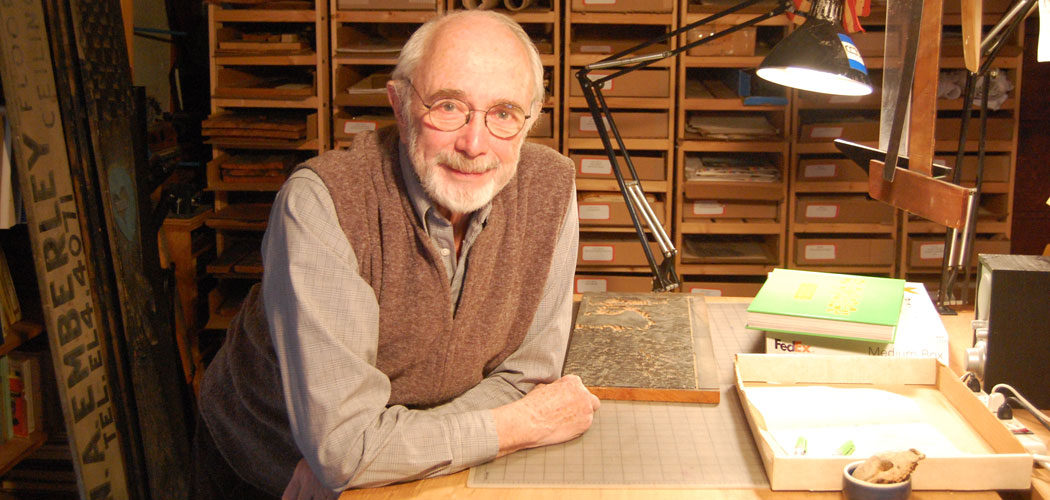 Who: Ed Emberley (born in Malden, MA, 1931)
Who: Ed Emberley (born in Malden, MA, 1931)
Book: Drummer Hoff / Prentice Hall / 1967
Writer: Barbara Emberley
Plot: Seven soldiers help assemble a cannon and, once assembled, fire it. (That's it. It's as simple as that. Or . . . is it?)
Misc: On the surface, the book written and drawn by the Emberleys is a 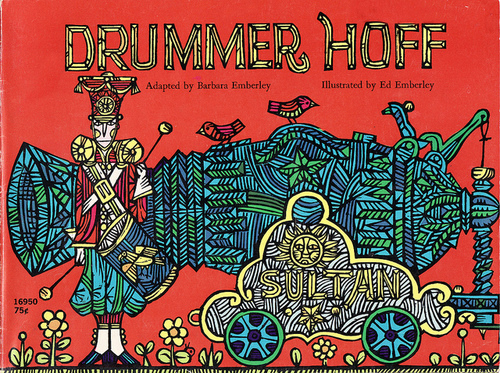 simple semi-nursery rhyme. Ed Emberley has explained that Drummer was an adaptation of the early 19th Century rhyme "John Ball Shot Them All". The names of the soldiers have changed, but the conceit of rhyming their last names to their responsibility remains, e.g. "General Border gives the order, Sergeant Chowder brings the powder . . ." The illustrations, which are unmistakably Emberley, have been praised for somehow conveying the feel of American Colonial art and the more psychedelic tendencies of the late sixties. It's certainly two styles of art that don't seem to naturally intersect, and yet Emberley makes it seem like the most natural of marriages.
simple semi-nursery rhyme. Ed Emberley has explained that Drummer was an adaptation of the early 19th Century rhyme "John Ball Shot Them All". The names of the soldiers have changed, but the conceit of rhyming their last names to their responsibility remains, e.g. "General Border gives the order, Sergeant Chowder brings the powder . . ." The illustrations, which are unmistakably Emberley, have been praised for somehow conveying the feel of American Colonial art and the more psychedelic tendencies of the late sixties. It's certainly two styles of art that don't seem to naturally intersect, and yet Emberley makes it seem like the most natural of marriages.
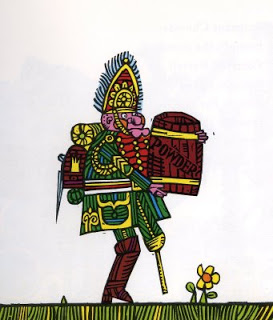 While many critics were quick to label Drummer Hoff as an anti-war poem/book, the Emberleys were always careful to never spell out an explicit message for the book. Ed Emberley, who had received a Caldecott honor for his previous collaboration with wife Barbara for the art on 1966's One Wide River to Cross, spelled out exactly what he thought the take away from Drummer Hoff would - or should - be, in his 1968 Caldecott Medal acceptance speech:
While many critics were quick to label Drummer Hoff as an anti-war poem/book, the Emberleys were always careful to never spell out an explicit message for the book. Ed Emberley, who had received a Caldecott honor for his previous collaboration with wife Barbara for the art on 1966's One Wide River to Cross, spelled out exactly what he thought the take away from Drummer Hoff would - or should - be, in his 1968 Caldecott Medal acceptance speech:
The book’s main theme is a simple one — a group of happy warriors build a cannon that goes “KAHBAHBLOOM.” But, there is more to find if you “read” the pictures. They show that men can fall in love with war and, imitating the birds, go to meet it dressed as if to meet their sweethearts. The pictures also show that men can return from war sometimes with medals, and sometimes with wooden legs . . . The book’s primary purpose is, as it should be, to entertain.
It's difficult to ignore, however, the final page of the book. After the eager soldiers happily build the royal cannon (affectionately named "SULTAN"), and after the aforementioned, and explosively illustrated, "KAHBAHBLOOM", comes that last page. Time has passed. The cannon is in ruins. But the scene is not one of desolation. In place of the medals and finery of the soldiers is grass, overgrown and winding over and around the cannon with wild, wayward orange and yellow flowers shooting up between the blades of grass. Life goes  on and thrives in this future scene. A grasshopper and butterfly play on and near the weapon formerly known as SULTAN. A spider has spun his web atop the old armament and a mother and father bird have built their nest in the mouth of the cannon where the are shown feeding their baby birds. Emberley can profess all he wants that Drummer Hoff is meant simply, "to entertain", but the inclusion of the final image makes the story and its art a timeless book that can launch thoughtful discussions among readers of every age.
on and thrives in this future scene. A grasshopper and butterfly play on and near the weapon formerly known as SULTAN. A spider has spun his web atop the old armament and a mother and father bird have built their nest in the mouth of the cannon where the are shown feeding their baby birds. Emberley can profess all he wants that Drummer Hoff is meant simply, "to entertain", but the inclusion of the final image makes the story and its art a timeless book that can launch thoughtful discussions among readers of every age.
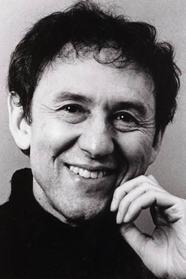 Who: Uri Shulevitz (born in Warsaw, Poland, 1935)
Who: Uri Shulevitz (born in Warsaw, Poland, 1935)
Book: The Fool of the World and the Flying Ship / Farrar, Straus and Giroux / 1968
Writer: Arthur Ransome
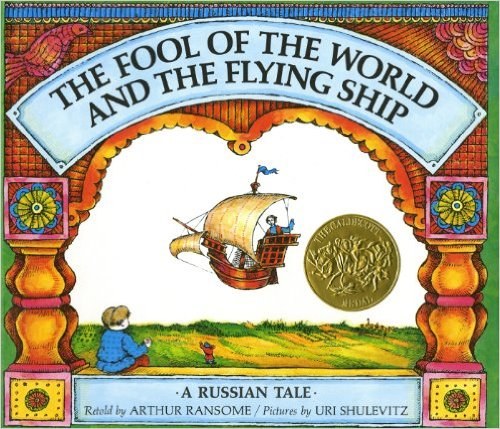 Plot: This adaptation of a Russian folktale sees a Czar announce that whoever in the Kingdom can bring him a flying ship will be given the hand of his daughter the Princess. A peasant family sends two of their three sons on a journey to complete a quest that will see them wed to the Princess. But they discount their third son, the titular "Fool" whose fantastical journey sees him deliver a flying ship to the Czar only to have the Czar continue to challenge his promise with more and more outlandish requests. Will the colorful cast of characters find that their outlandish abilities (the power to drink or eat unimaginable volumes, super vision, inhuman speed, etc.) are suddenly quite practical?
Plot: This adaptation of a Russian folktale sees a Czar announce that whoever in the Kingdom can bring him a flying ship will be given the hand of his daughter the Princess. A peasant family sends two of their three sons on a journey to complete a quest that will see them wed to the Princess. But they discount their third son, the titular "Fool" whose fantastical journey sees him deliver a flying ship to the Czar only to have the Czar continue to challenge his promise with more and more outlandish requests. Will the colorful cast of characters find that their outlandish abilities (the power to drink or eat unimaginable volumes, super vision, inhuman speed, etc.) are suddenly quite practical?
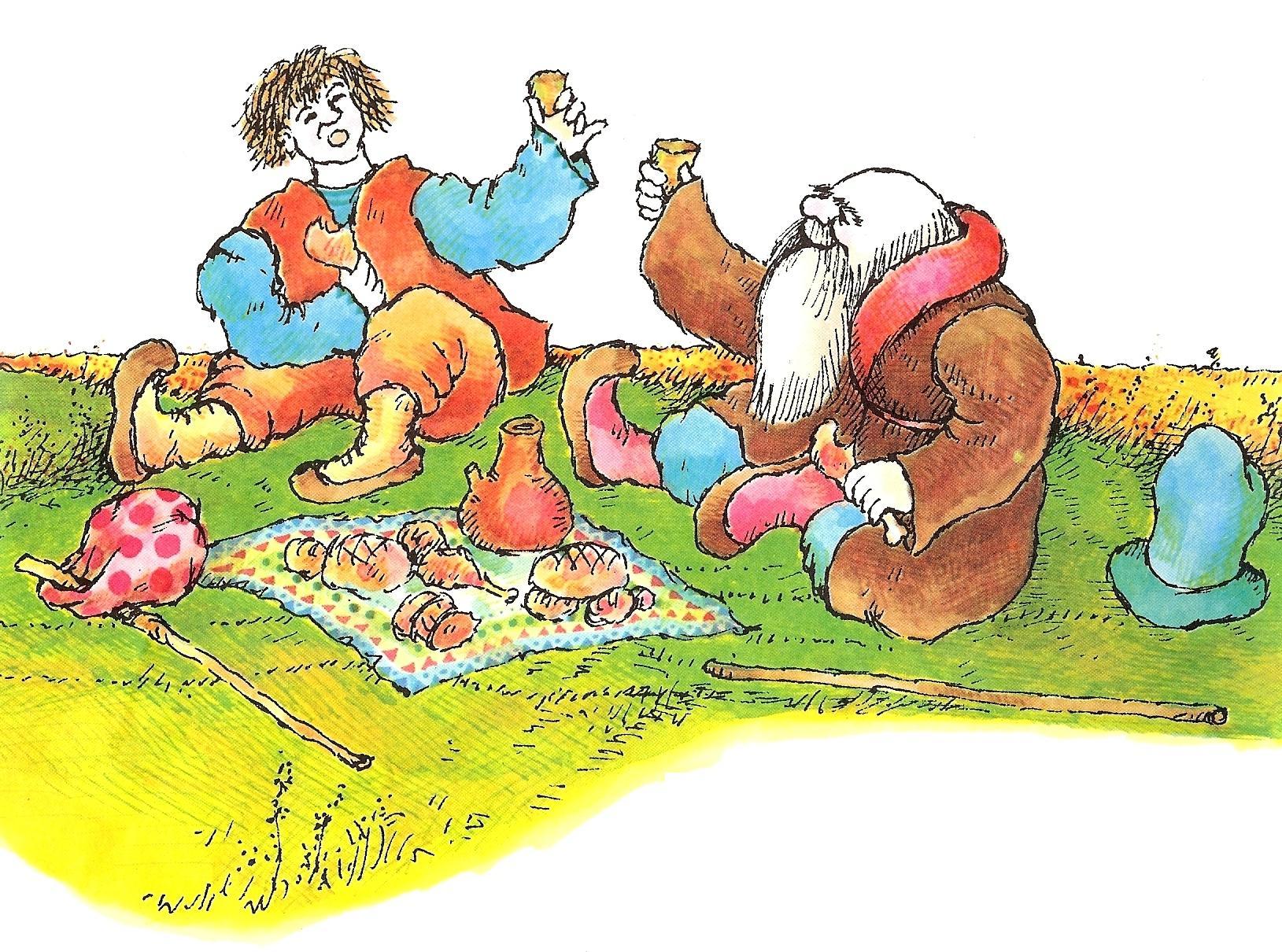
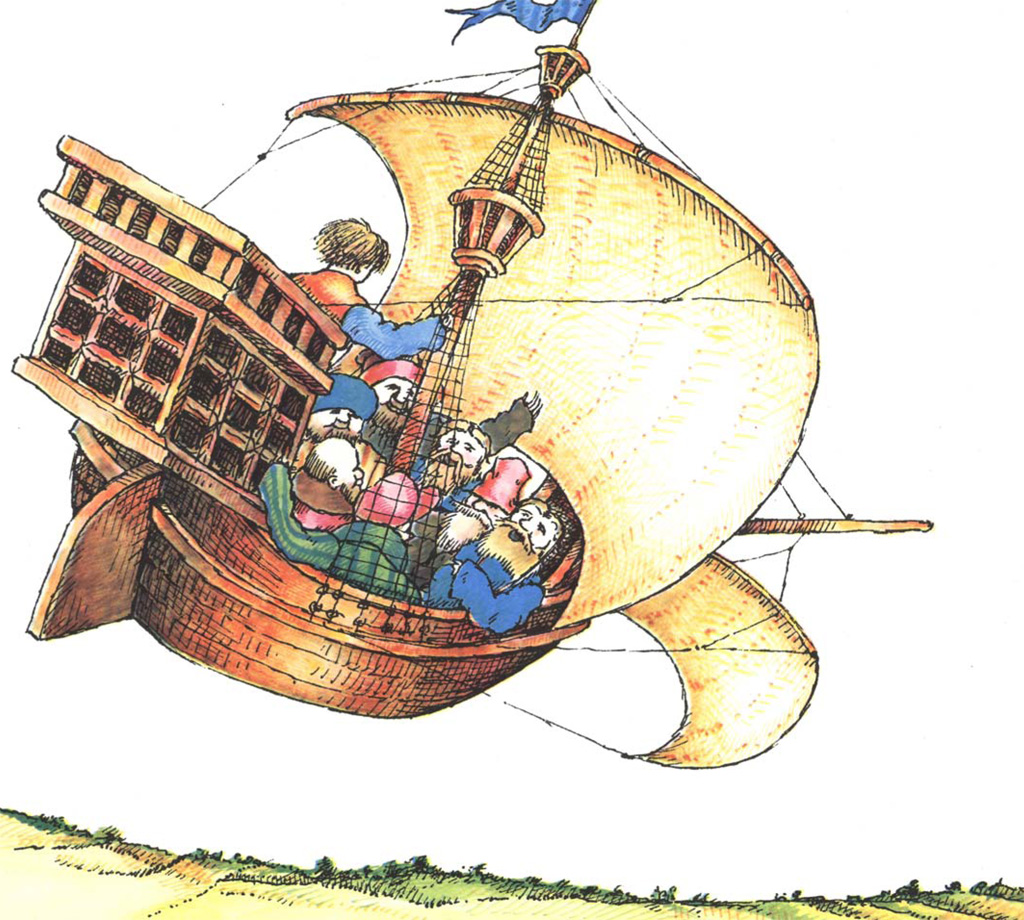 Misc: Why aren't more people familiar with the work of Uri Shulevitz? There's no easy answer for why a writer/illustrator of Shulevitz's immense talent isn't more of a household name. Shulevitz, currently living in New York City, celebrated his 80th year by releasing his 40th book, the transportation themed Troto and the Trucks. Shulevitz was first recognized by the Caldecott committee at the close of the 1960's with the Caldecott Medal for his work on Fool. He continued to change his style while capturing the eye of the committee with Caldecott honors for his work in the 1970's through the 1990's. On the fortieth anniversary of Shulevitz receiving his Caldecott Medal, he received a Caldecott Honor for his work on 2008's How I Learned Geography.
Misc: Why aren't more people familiar with the work of Uri Shulevitz? There's no easy answer for why a writer/illustrator of Shulevitz's immense talent isn't more of a household name. Shulevitz, currently living in New York City, celebrated his 80th year by releasing his 40th book, the transportation themed Troto and the Trucks. Shulevitz was first recognized by the Caldecott committee at the close of the 1960's with the Caldecott Medal for his work on Fool. He continued to change his style while capturing the eye of the committee with Caldecott honors for his work in the 1970's through the 1990's. On the fortieth anniversary of Shulevitz receiving his Caldecott Medal, he received a Caldecott Honor for his work on 2008's How I Learned Geography.
Cult film lovers will recognize pieces of Terry Gilliam's 1988 box office failure "The Adventures of Baron Munchausen" are almost directly adapted from some of Ransome/Shulevitz's adaptations.
Availability: Hardcover and paperback versions of the book are still in print and are relatively easy to find.